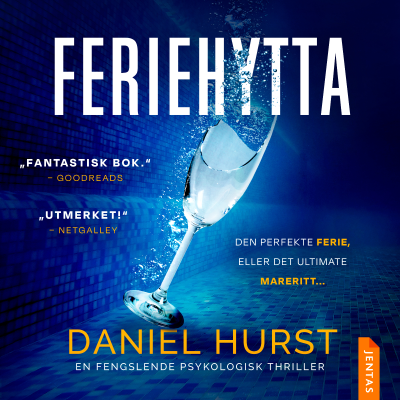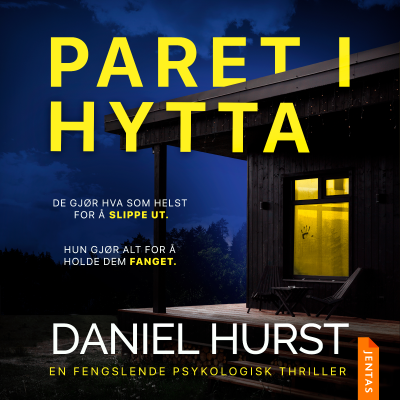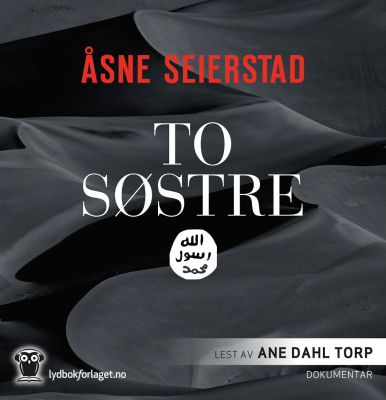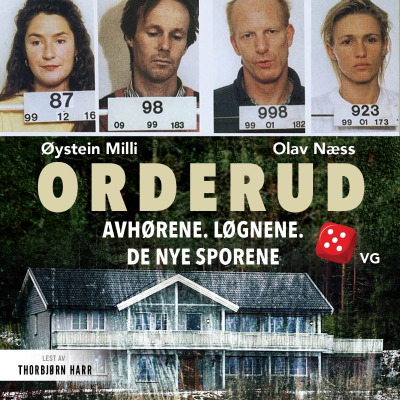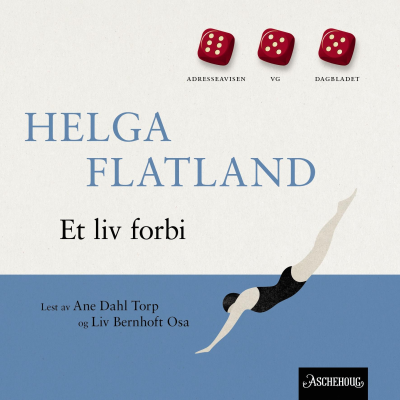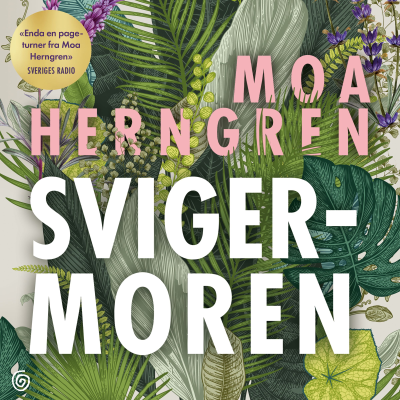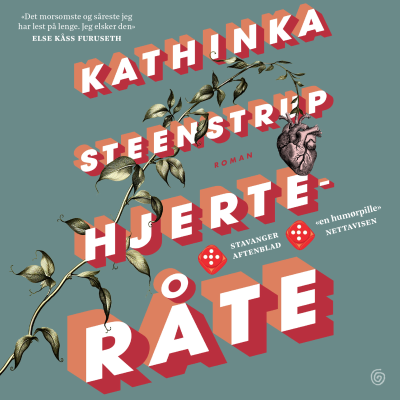
Factor Two
engelsk
Sport
Prøv gratis i 60 dager
99 kr / Måned etter prøveperioden.Avslutt når som helst.
- 20 timer lydbøker i måneden
- Eksklusive podkaster
- Gratis podkaster
Les mer Factor Two
Factor Two is a climbing podcast with impact, brought to you by Wil Treasure and UKClimbing.com. It brings you the best climbing stories straight from the people at their heart - and the best climbing stories are always about a little bit more than just climbing. https://www.factortwo.co.uk
Alle episoder
24 EpisoderBirth Pains of New Nations - Pete Oxley
The whims and motivations of climbers really are another world to the person in the street. Understanding them is crossing a threshold, it requires a certain suspension of disbelief to start to see the world of risk, adventure, suffering and more in a different light. Those thresholds exist within climbing too. One of them is understanding the obsessive new-router. I think we can all appreciate the buzz of discovering something no-one else has done. We could probably imagine cleaning something, maybe even drilling some bolts, although I bet few of us have actually done it. Even fewer can really get inside the mindset of the truly obsessed. That person who will plough time and money that could be used on trips and climbing into finding, cleaning and climbing new routes. Pete Oxley is one of these people, and what fascinates me about him, and others who were new routing at the same time, is the sheer volume of routes he was putting up - more than 800 new routes, many in Dorset, but also in Avon and Cheddar, the Peak District and south and west Wales. His output is probably only surpassed by Gary Gibson, Martin Crocker and Pat Littlejohn. Pete’s opened up routes of all grades, but was responsible for some of the hardest lines around, including Laughing Arthur, E8 6b, and Infinite Gravity, F8a+, both taking on the impressive overhangs at Blacker’s Hole in Swanage. Pete was also part of a new wave of climbing in the 1980s, with new ideas and a pushback against traditional ethics. That tradition is particularly strong in Britain - we don’t like bolts. Or, rather, we didn’t like them. When Pete started his new routing activities the direction of climbing was changing. He had a reasonably traditional induction in some ways, spending years trad climbing before really becoming obsessed with bolting lines, but also a rather insular way of creating his own routes and problems, coming up with training methods and opening up unusual venues, like railway bridges. At the time, continental ideas about sport climbing and bolting were creeping into the UK. There was still an abundance of rock to be climbed, if you knew where to look, and there were venues where, today, it seems obvious that you’d bolt them. But back then that wasn’t the case - someone needed to be the first, and they had to have a thick skin to weather the storm of criticism that would follow. Pete’s routes emerged, through a few mistakes and accidents along the way, as one of the biggest legacies of the era. If you’ve climbed on Portland or Swanage you’ve almost certainly done one of his routes, and you’ve probably clipped his home-made bolts. In order to achieve this legacy Pete lived on the dole, like many UK climbers in the 1980s. He was probably the only full-time climber in south-west England at the time. He invested his time in training, finding and cleaning new routes, testing out new ideas for bolts and enjoying the creativity of the sport. His unusual drive - spending many days alone on the sea cliffs bolting and cleaning, in all conditions - have created a legacy for the climbing community. In this episode I talked to Pete about the source of this motivation, the development of Dorset as a sport climbing destination, and why he was so inspired by the late John Peel - a parallel story of a new creative independence in climbing, matched by the growing indie music scene. Pete would like to thank his partner of 29 years, Jan Rostrom, his parents and the Portland Pipers (they know who they are) for their support over the years. Sign up to the newsletter at: https://factortwo.co.uk [https://factortwo.co.uk] You can follow Factor Two on Facebook [https://www.facebook.com/factortwopod/]. Wil Treasure on Twitter - @treasurewild [https://twitter.com/treasurewild] Music credits: All music in this episode comes from Blue Dot Sessions [https://www.sessions.blue/].
Hateja - Louise Thomas and Glenda Huxter
If you had to select your late 90s dream team for a British, all-female Himalayan big wall trip, you couldn’t go far wrong with this one. Glenda Huxter was onsighting E7, Kath Pyke had extensive experience on rock and alpine routes, and Louise Thomas brought even more big wall and expedition experience to the team. Their 1997 objective was a first ascent on Beatrice, by chance the first Himalayan Peak named after a woman: British mountaineer Beatrice Tomasson. The south-east face of Beatrice towers over the Charakusa glacier in the K7 region of the Karakoram. The base of the granite wall starts at over 5000m, leading to the summit ridge at around 5800m. They were joined at base camp by Mike “Twid” Turner (now Louise’s husband, who featured in the episode Brave New World), Grant Farquhar and Steve Mayers, who were also attempting a line on the face. The dream of a pure all-female ascent crumbled fairly quickly when an initial reconnaissance revealed only one line of weakness through the overhangs at the base of the wall. The two teams worked together to overcome this section, with Louise establishing difficult aid pitches, and they found a higher camp above the difficulties for their portaledges. From this point the boys went right and the girls left. Over the course of several weeks, they endured poor weather and problems with altitude sickness, but they pressed on. The face was putting up a fight, but the boys had found the easier line and eventually topped out on the wall. The summit itself was a dangerous, loose ridge traverse away, so like subsequent teams they avoided it. The girls were left in a difficult position. They were committed on the wall and had put in weeks of effort to get this far, but time was running out. They had one day left to push for the top. They formed a plan. With an alpine start, they would press on as far as they could and hopefully make the top before a self-imposed cut-off time, but the weather had other ideas. They woke to fresh snow and all seemed lost, so they zipped up the flysheet and got back into their sleeping bags, resigned to retrieving their gear and making the long abseil retreat. But luck was on their side after all. With a later start they headed back up their fixed ropes and, as they neared the top, the weather cleared. They decided to press on to see how far they could get, and the wall started to relent. Their cut-off time came and went, but they kept climbing, determined to make the summit. They made it, late in the day, but elated. The descent was arduous, with huge haulbags, hundreds of metres of rope and one shredded sheath before reaching their advanced base camp on the glacier. It’s a testament to the determination of the team that they were able to push on right to the end, but also to the talent they had brought to this expedition. They called their route “Hateja”, meaning “Strong-willed, determined lady” - a suggestion from their base camp cook - and graded it ED+ A3+ 750m. In this episode, I spoke to Louise and Glenda about their experience of the expedition and what had helped them to dig deep on that final day. Follow Factor Two on Facebook [https://facebook.com/factortwopod] or Instagram [https://instagram.com/factor.two]. Wil Treasure on Twitter - @treasurewild [https://twitter.com/treasurewild] Music credits: All music in this episode comes from Blue Dot Sessions [https://sessions.blue].
Finding the Balance - Katherine Schirrmacher
We all get enjoyment from climbing for different reasons. For many of us those reasons change over time, according to our geography, time, money and other pressures in our lives. I’ve read Katherine Schirrmacher’s blog for years, and she’s unusually good at expressing all of those little things that can affect your motivation or self belief. Like many of us, she was excited for the adventure of trad climbing in her early days, but she became an all-rounder; sport climbing, bouldering and competing as part of the British team. Being good at climbing can be a really satisfying thing, but if you spread yourself too thin, in too many disciplines that’s hard work. When you’re young and free you can sustain the energy needed, but as you get older all of those other features of life - work, children, relationships - creep in and put pressures on that time you were so eager to use for climbing. You pick up injuries, or can’t get out so easily when conditions are good, and when you’ve been so focussed on your performance that it’s hard to reel back. So how do you find a balance? For Katherine, it’s been about understanding what really brings her happiness in climbing. It could be giving herself permission to try a route, or leave it for another day. It might be focussing on the great friendships she has in the sport. It might be the sense of being in a beautiful place, or moving well on the rock. And, of course, it could still be climbing hard, but on her own terms. Many of us use climbing as an escape, but Katherine told me she’s learned to appreciate just how central it is in her life. In doing so she’s been able to find ways to match her goals to the things that will really make her happy, and she’s done so by listening to how others do the same. You can find Katherine on her website at lovetoclimb.co.uk [https://www.lovetoclimb.co.uk/] and on Instagram @katherine.schirrmacher [https://www.instagram.com/katherine.schirrmacher/] Factor Two is brought to you by Wil Treasure and UKClimbing.com [https://www.ukclimbing.com/] Follow Factor Two on Facebook [https://www.facebook.com/factortwopod/] or Instagram [https://www.instagram.com/factor.two]. Wil Treasure on Twitter - @treasurewild [https://twitter.com/treasurewild] Music credits: All music in this episode comes from Blue Dot Sessions [https://www.sessions.blue/].
El Capitan - a film by Fred Padula
In the spring of 1968 San Francisco film maker, Fred Padula, drove into the Yosemite Valley and gazed up at El Capitan. He had been approached by one of his film students, Glen Denny, a talented climber and photographer, to advise on making a film about climbing The Nose. Denny had been part of the team that made the third ascent of the route. He’d also made the first ascent of the Dihedral Wall and was well connected in big wall circles. The concept was to create a film that would be as awe-inspiring as climbing The Nose. The logistics of such a film felt impossible to Padula at first. The Arriflex camera alone weighed 6.5kg, without film, and filming capacity was measured in feet, not Gigabytes in those days. A 100 foot reel was just 160 seconds of footage, and changing the reel on the wall in bright sunlight was so awkward that they’d lose 40 seconds of that every time. Recording sound was no simpler. Padula had a 4-track recorder specially made as there were no commercial models. He had to experiment with masts to be able to receive a strong enough signal from the climbers’ microphones. After all of this effort only 2 of the mics worked. After much negotiation they found a team - Richard McCracken, Gary Colliver and Lito Tejada-Flores. They’d need money too. Denny approached the founder of The North Face, Douglas Tompkins, who had recently sold his San Francisco shops and was looking to invest in adventure films. With money from Padula, Denny, “Cado” Avenali and Tompkins they had what seemed like a healthy budget of around $30,000 - more than $200,000 at today’s prices. The problems with filming took their toll, however. Tompkins had been inspired by his friend Bruce Brown, who had become a millionaire after his legendary surf film The Endless Summer was released a few years earlier. Brown is credited with kickstarting a surf-travel lifestyle that was a boon to brands and the sport. Tompkins wanted a piece of that action and was starting to realise that the slow pace of both the film and the climbers wasn’t going to replicate the excitement of The Endless Summer. Unbeknown to Padula, Tompkins left the project and withdrew his money. Padula was left as producer, deeply in debt and with limited idea of what the film was supposed to be. They finished the filming on the wall and he and Denny continued to film scenery shots around Yosemite, before Denny also got cold feet and abandoned the project, asking Padula to destroy the footage. After a day in court Padula was left with the film and the debts. Over several years the film sat in his San Francisco basement while he paid off the debts and got hassled by different people over when the film would be made, either because they wanted to see it, or in Avenali’s case because he wanted a return on his investment. With the help of Tejada-Flores and McCracken, Padula laid out the film and the sound and got to work on creating his vision of what the film could be. In 1978, ten years after filming first started, he released El Capitan to much acclaim. It went on to win the Grand Prize at the 1979 Banff Film Festival. In this episode Fred Padula and Richard McCracken talk about making the film and the challenges they faced in both climbing the route and filming on it. Factor Two is produced by Wil Treasure for UKClimbing.com Find us on Instagram @factor.two [instagram.com/factor.two] Music in this episode is from Blue Dot Sessions. [sessions.blue]
Hard Grit - Rich Heap, Niall Grimes and Seb Grieve
When it was released in 1998, Hard Grit gave us an insight into something we didn’t often see - the actual ascents of the hardest, most dangerous lines on grit. In an era before everyone had a smartphone, before digital photography was even mainstream, many of the photos we saw in the magazines were staged. The hardest lines captured on video were often toproped reconstructions. Hard Grit changed that, by virtue of a few lucky coincidences and a lot of hard work. Director Rich Heap had helped Johnny Dawes with some of the editing on his film Best Forgotten Art. Johnny left for a roadtrip in America, and Rich was left with his camera. Without much of a plan he started filming some routes on the grit. Being a talented climber himself, and living with Seb Grieve, meant that he had access to the grapevine of some of the boldest and best climbers around. He started to amass some interesting footage. Then one day at Black Rocks he captured the scenes that would bookend the film - Seb’s first ascent of Meshuga and Jean-Minh Trin-Thieu’s famous lob off Gaia - and he realised he had something special. Realising he had a film on his hands, Rich enlisted the help of Mark Turnbull to act as producer. The pair set about building on his footage. They created a loose storyline around the history of gritstone climbing, presented by Niall Grimes. In the process a new mythology around these ascents was born, and had an international impact. One of the central themes to the film was the madness of the whole thing. That madness was embodied by Seb Grieve, shouting and talking to himself on the most terrifying ascents. But Seb wasn’t mad, he’d practiced the routes carefully, he’d made detailed notes about the gear and, crucially, he’d actually looked closely at the “shipwreck” of a flake on Parthian Shot. Seb is the film's have-a-go hero, but he had a healthy CV of hard ascents already, including early repeats of Braille Trail and Gaia. In this episode Seb, Niall and Rich recall how Hard Grit came about and how it became a part of the climbing culture it reflected. Factor Two is brought to you by Wil Treasure and UKClimbing.com Follow Factor Two on Facebook [facebook.com/factortwopod] or Instagram [instagram.com/factor.two]. Wil Treasure on Twitter - @treasurewild [twitter.com/treasurewild] Music credits: All music in this episode comes from Blue Dot Sessions [sessions.blue].
Velg abonnementet ditt
Premium
20 timer lydbøker
Eksklusive podkaster
Gratis podkaster
Avslutt når som helst
Prøv gratis i 60 dager
Deretter 99 kr / month
Premium Plus
100 timer lydbøker
Eksklusive podkaster
Gratis podkaster
Avslutt når som helst
Prøv gratis i 60 dager
Deretter 169 kr / month
Prøv gratis i 60 dager. 99 kr / Måned etter prøveperioden. Avslutt når som helst.










